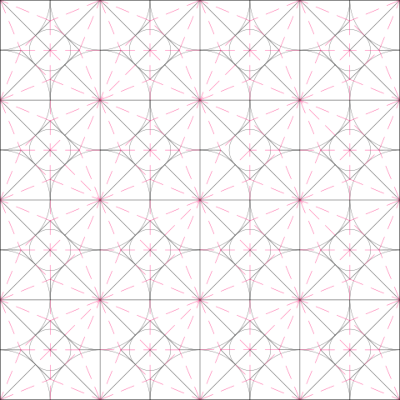
Is it possible to fold a square napkin so that its perimeter increases? This beautifully simple question has attracted sustained attention since Soviet mathematician Vladimir Arnold first posed it in 1956. If each fold must include all layers, then the answer is no: The perimeter of a folded unit square will never exceed 4. In 1997 American physicist Robert J. Lang showed that the perimeter can be increased if certain sophisticated origami techniques are permitted, but in Lang’s solution the panels and folds don’t remain strictly rigid during intermediate steps. It wasn’t until 2004 that A. Tarasov managed to show that the task can be accomplished within the constraints of “rigid origami.” This satisfies the original problem, but some variants of the challenge remain unresolved within the complex world of paper folding.
